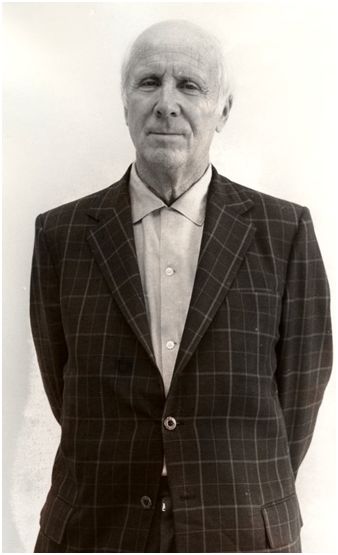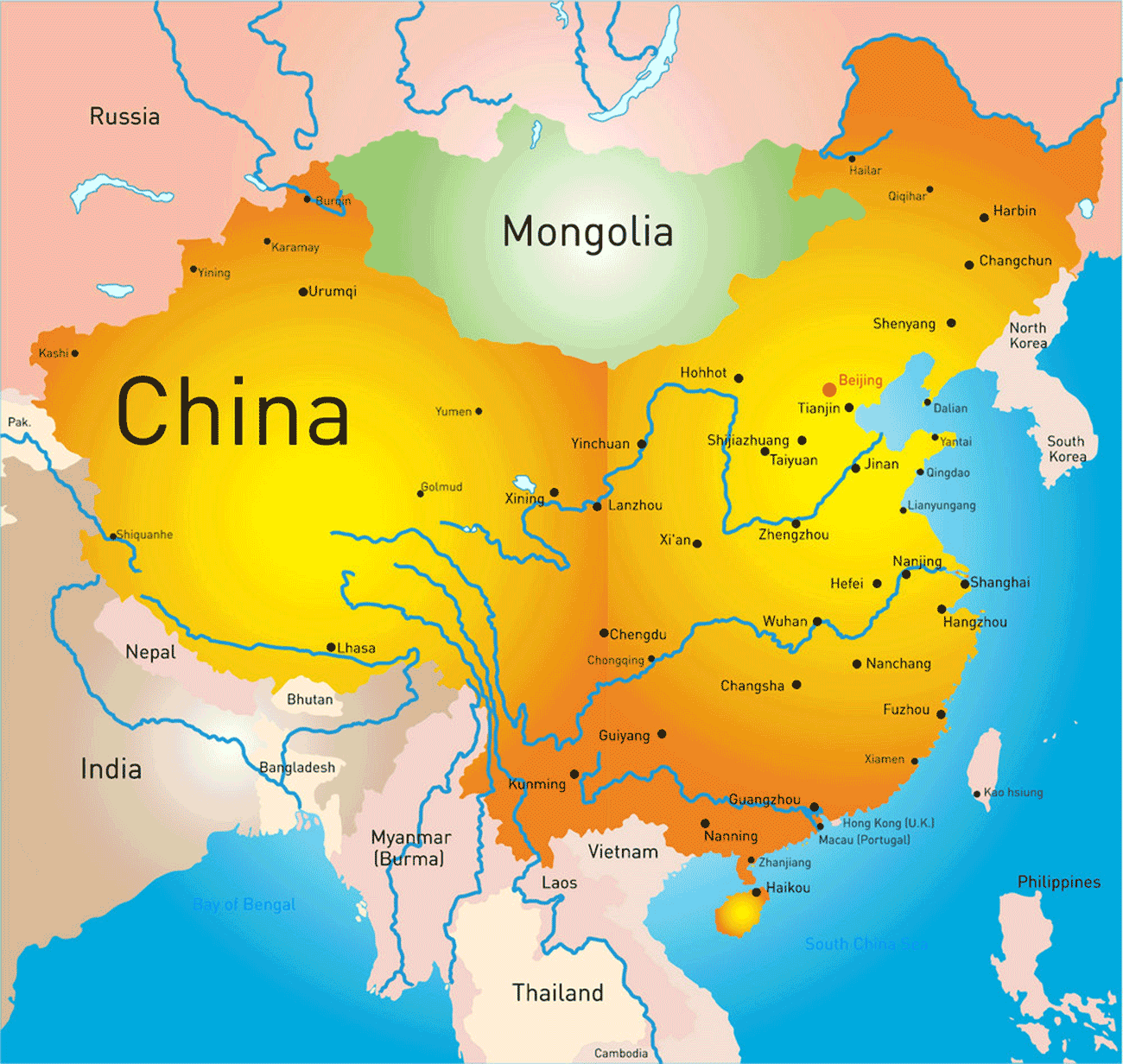
A HISTORY OF CHINA
By
Wolfram Eberhard
 |
THE EARLIEST TIMES
CHAPTER I.
PREHISTORY OF CHINA
CHAPTER II.
THE SHANG DYNASTY(1600-1028 B.C.)
ANTIQUITY
CHAPTER III.
THE CHOU DYNASTY(1028-257 BC)
CHAPTER IV.
THE CONTENDING STATES
(481-256 BC)
DISSOLUTION OF THE FEUDAL SYSTEM
CHAPTER V.
THE CH'IN DYNASTY(256-207 B.C.)
THE MIDDLE AGES
CHAPTER VI.
THE HAN DYNASTY (206 B.C.-A.D. 220)
CHAPTER VII.
THE EPOCH OF THE FIRST DIVISION OF CHINA
(A.D.220-580)
CHAPTER VIII.
THE EMPIRES OF THE SUI (AD 580-618)
AND THE T'ANG (A.D. 618-906)
MODERN TIMES
CHAPTER IX.
THE EPOCH OF THE SECOND DIVISION OF CHINA
The period of transition: the Five Dynasties (AD 906-960)
CHAPTER X.
The Northern Sung dynasty
CHAPTER XI.
THE PERIOD OF ABSOLUTISM
(A)
The Mongol Epoch (1280-1368)
CHAPTER XII.
THE PERIOD OF ABSOLUTISM
(B)
The Ming Epoch (1368-1644)
CHAPTER XIII.
THE PERIOD OF ABSOLUTISM
(C)
The Manchu Dynasty (1644-1911)
CHAPTER XIV.
THE REPUBLIC (1912-1948)
CHAPTER XV.
PRESENT DAY CHINA
INTRODUCTION
Histories of China fall, with
few exceptions, into one or the other of two groups, pro-Chinese and
anti-Chinese: the latter used to predominate, but today the former type is much
more frequently found. We have no desire to show that China's history is the
most glorious or her civilization the oldest in the world. A claim to the
longest history does not establish the greatness of a civilization; the
importance of a civilization becomes apparent in its achievements. A thousand
years ago China's civilization towered over those of the peoples of Europe.
Today the West is leading; tomorrow China may lead again. We need to realize
how China became what she is, and to note the paths pursued by the Chinese in
human thought and action. The lives of emperors, the great battles, this or the
other famous deed, matter less to us than the discovery of the great forces
that underlie these features and govern the human element. Only when we have
knowledge of those forces and counter-forces can we realize the significance of
the great personalities who have emerged in China; and only then will the
history of China become intelligible even to those who have little knowledge of
the Far East and can make nothing of a mere enumeration of dynasties and
campaigns.
Views on China’s history have
radically changed in recent years. Until about thirty years ago our knowledge
of the earliest times in China depended entirely on Chinese documents of much
later date; now we are able to rely on many excavations which enable us to
check the written sources. Ethnological, anthropological, and sociological
research has begun for China and her neighbors; thus we are in a position to
write with some confidence about the making of China, and about her ethnical
development, where formerly we could only grope in the dark. The claim that
"the Chinese race" produced the high Chinese civilization entirely by
its own efforts, thanks to its special gifts, has become just as untenable as
the other theory that immigrants from the West, some conceivably from Europe,
carried civilization to the Far East. We know now that in early times there was
no "Chinese race", there were not even "Chinese", just as
there were no "French" and no "Swiss" two thousand years
ago. The "Chinese" resulted from the amalgamation of many separate
peoples of different races in an enormously complicated and long-drawn-out
process, as with all the other high civilizations of the world.
The picture of ancient and
medieval China has also been entirely changed since it has been realized that
the sources on which reliance has always been placed were not objective, but
deliberately and emphatically represented a particular philosophy. The reports
on the emperors and ministers of the earliest period are not historical at all,
but served as examples of ideas of social policy or as glorifications of
particular noble families. Myths such as we find to this day among China's neighbors
were made into history; gods were made men and linked together by long family
trees. We have been able to touch on all these things only briefly, and have
had to dispense with any account of the complicated processes that have taken
place here.
The official dynastic
histories apply to the course of Chinese history the criterion of Confucian
ethics; for them history is a textbook of ethics, designed to show by means of
examples how the man of high character should behave or not behave. We have to
go deeper, and try to extract the historic truth from these records. Many
specialized studies by Chinese, Japanese, and Western scholars on problems of
Chinese history are now available and of assistance in this task. However, some
Chinese writers still imagine that they are serving their country by yet again
dishing up the old fables for the foreigner as history; and some Europeans,
knowing no better or aiming at setting alongside the unedifying history of
Europe the shining example of the conventional story of China, continue in the
old groove. To this day, of course, we are far from having really worked
through every period of Chinese history; there are long periods on which
scarcely any work has yet been done. Thus the picture we are able to give today
has no finality about it and will need many modifications. But the time has
come for a new synthesis, so that criticism may proceed along the broadest
possible front and push our knowledge further forward.
The present work is intended
for the general reader and not for the specialist, who will devote his
attention to particular studies and to the original texts. In view of the wide
scope of the work, I have had to confine myself to placing certain lines of
thought in the foreground and paying less attention to others. I have devoted
myself mainly to showing the main lines of China's social and cultural
development down to the present day. But I have also been concerned not to
leave out of account China's relations with her neighbors. Now that we have a
better knowledge of China's neighbors, the Turks, Mongols, Tibetans, Tunguses,
Tai, not confined to the narratives of Chinese, who always speak only of
"barbarians", we are better able to realize how closely China has
been associated with her neighbors from the first day of her history to the
present time; how greatly she is indebted to them, and how much she has given
them. We no longer see China as a great civilization surrounded by barbarians,
but we study the Chinese coming to terms with their neighbors, who had
civilizations of quite different types but nevertheless developed ones.
It is usual to split up
Chinese history under the various dynasties that have ruled China or parts
thereof. The beginning or end of a dynasty does not always indicate the
beginning or the end of a definite period of China's social or cultural
development. We have tried to break China's history down into the three large
periods—"Antiquity", "The Middle Ages", and "Modern
Times". This does not mean that we compare these periods with periods of
the same name in Western history although, naturally, we find some similarities
with the development of society and culture in the West. Every attempt towards
periodization is to some degree arbitrary: the beginning and end of the Middle
Ages, for instance, cannot be fixed to a year, because development is a
continuous process. To some degree any periodization is a matter of
convenience, and it should be accepted as such.
The account of Chinese history
here given is based on a study of the original documents and excavations, and
on a study of recent research done by Chinese, Japanese and Western scholars,
including my own research. In many cases, these recent studies produced new data
or arranged new data in a new way without an attempt to draw general
conclusions. By putting such studies together, by fitting them into the pattern
that already existed, new insights into social and cultural processes have been
gained. The specialist in the field will, I hope, easily recognize the sources,
primary or secondary, on which such new insights represented in this book are
based. Brief notes are appended for each chapter; they indicate the most
important works in English and provide the general reader with an opportunity
of finding further information on the problems
touched on. For the specialist brief hints to international research are given,
mainly in cases in which different interpretations have been proposed.
CHAPTER I.
PREHISTORY OF CHINA
